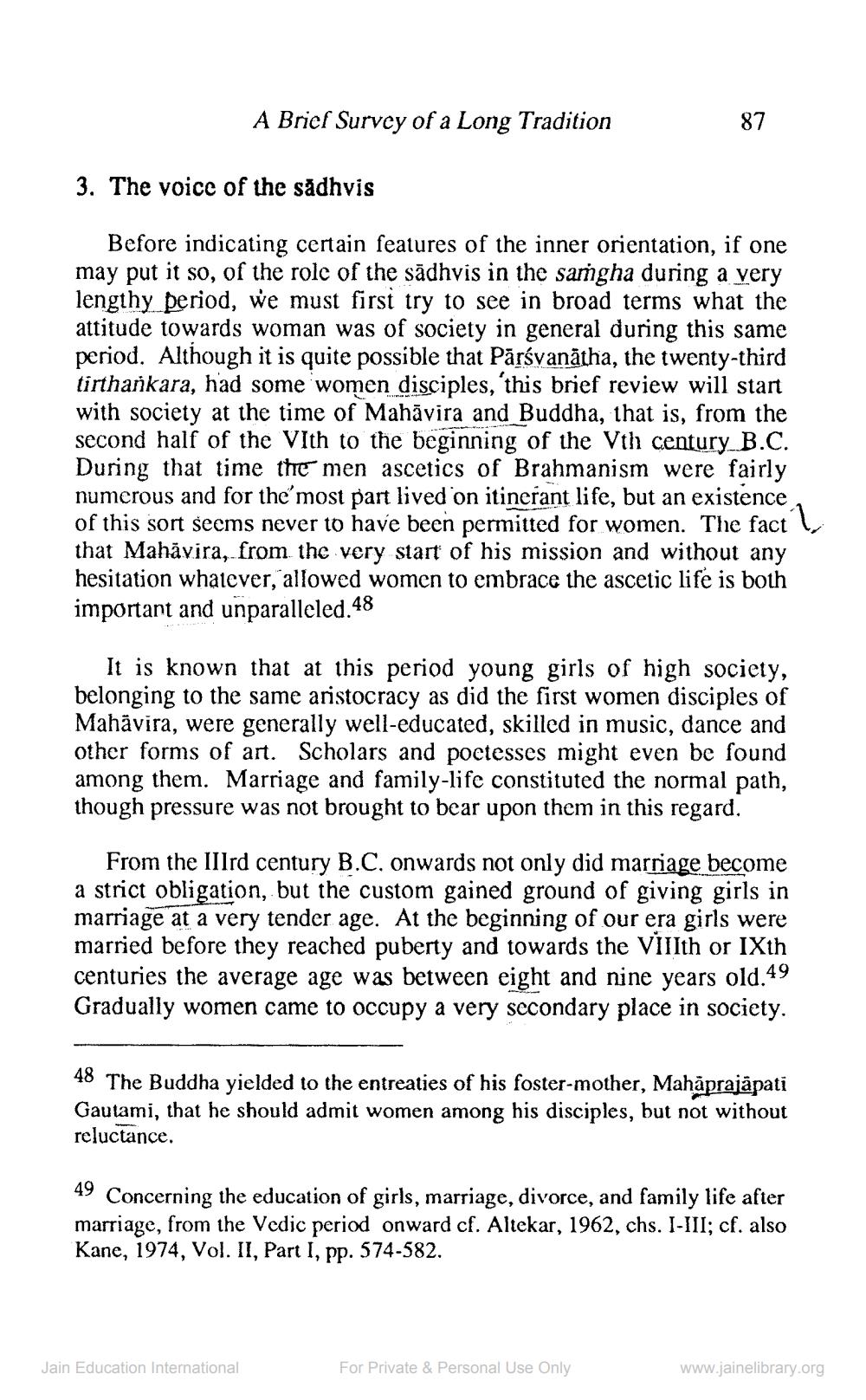________________
A Brief Survey of a Long Tradition
87
3. The voice of the sădhvis
Before indicating certain features of the inner orientation, if one may put it so, of the role of the sādhvis in the samgha during a very lengthy period, we must first try to see in broad terms what the attitude towards woman was of society in general during this same period. Although it is quite possible that Pārsvanátha, the twenty-third tirthankara, had some women disciples, this brief review will start with society at the time of Mahāvira and Buddha, that is, from the second half of the Vith to the beginning of the Vth century B.C. During that time the men ascetics of Brahmanism were fairly numerous and for the most part lived on itinerant life, but an existence of this sort secms never to have been permitted for women. The fact , that Mahāvira, from the very start of his mission and without any hesitation whatever, allowed women to embrace the ascetic life is both important and unparalleled.48
It is known that at this period young girls of high society, belonging to the same aristocracy as did the first women disciples of Mahāvira, were generally well-educated, skilled in music, dance and other forms of art. Scholars and poetesses might even be found among them. Marriage and family-life constituted the normal path, though pressure was not brought to bear upon them in this regard.
From the IIIrd century B.C. onwards not only did marriage become a strict obligation, but the custom gained ground of giving girls in marriage at a very tender age. At the beginning of our era girls were married before they reached puberty and towards the VIIIth or IXth centuries the average age was between eight and nine years old.49 Gradually women came to occupy a very secondary place in society.
48 The Buddha yielded to the entreaties of his foster-mother, Maháprajapati Gautami, that he should admit women among his disciples, but not without reluctance.
49 Concerning the education of girls, marriage, divorce, and family life after marriage, from the Vedic period onward cf. Altekar, 1962, chs. I-III; cf. also Kane, 1974, Vol. II, Part I, pp. 574-582.
Jain Education International
For Private & Personal Use Only
www.jainelibrary.org




